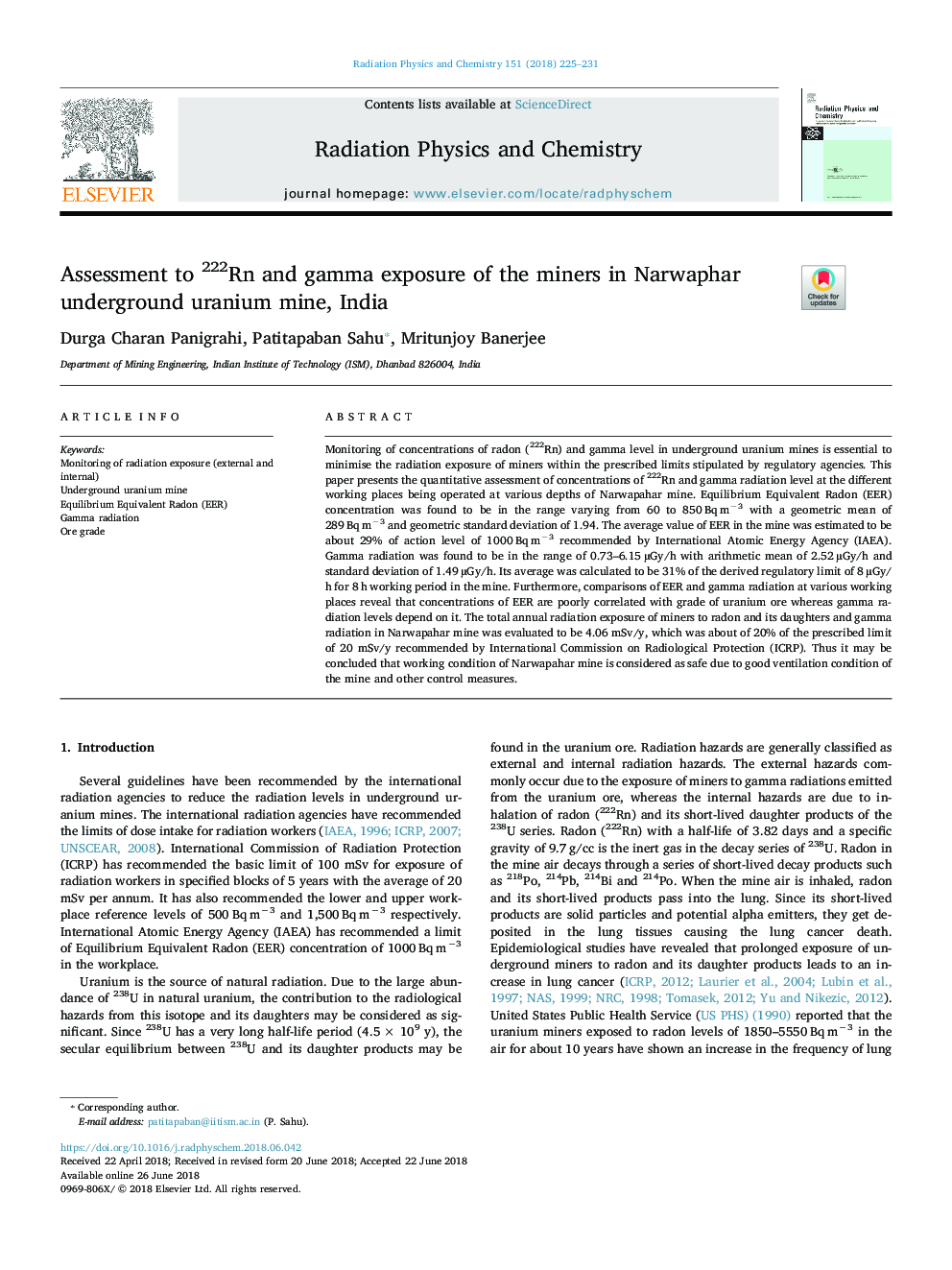| Article ID | Journal | Published Year | Pages | File Type |
|---|---|---|---|---|
| 8251264 | Radiation Physics and Chemistry | 2018 | 7 Pages |
Abstract
Monitoring of concentrations of radon (222Rn) and gamma level in underground uranium mines is essential to minimise the radiation exposure of miners within the prescribed limits stipulated by regulatory agencies. This paper presents the quantitative assessment of concentrations of 222Rn and gamma radiation level at the different working places being operated at various depths of Narwapahar mine. Equilibrium Equivalent Radon (EER) concentration was found to be in the range varying from 60 to 850â¯Bqâ¯mâ3 with a geometric mean of 289â¯Bqâ¯mâ3 and geometric standard deviation of 1.94. The average value of EER in the mine was estimated to be about 29% of action level of 1000â¯Bqâ¯mâ3 recommended by International Atomic Energy Agency (IAEA). Gamma radiation was found to be in the range of 0.73-6.15â¯ÂµGy/h with arithmetic mean of 2.52â¯ÂµGy/h and standard deviation of 1.49â¯ÂµGy/h. Its average was calculated to be 31% of the derived regulatory limit of 8â¯ÂµGy/h for 8â¯h working period in the mine. Furthermore, comparisons of EER and gamma radiation at various working places reveal that concentrations of EER are poorly correlated with grade of uranium ore whereas gamma radiation levels depend on it. The total annual radiation exposure of miners to radon and its daughters and gamma radiation in Narwapahar mine was evaluated to be 4.06 mSv/y, which was about of 20% of the prescribed limit of 20 mSv/y recommended by International Commission on Radiological Protection (ICRP). Thus it may be concluded that working condition of Narwapahar mine is considered as safe due to good ventilation condition of the mine and other control measures.
Related Topics
Physical Sciences and Engineering
Physics and Astronomy
Radiation
Authors
Durga Charan Panigrahi, Patitapaban Sahu, Mritunjoy Banerjee,
